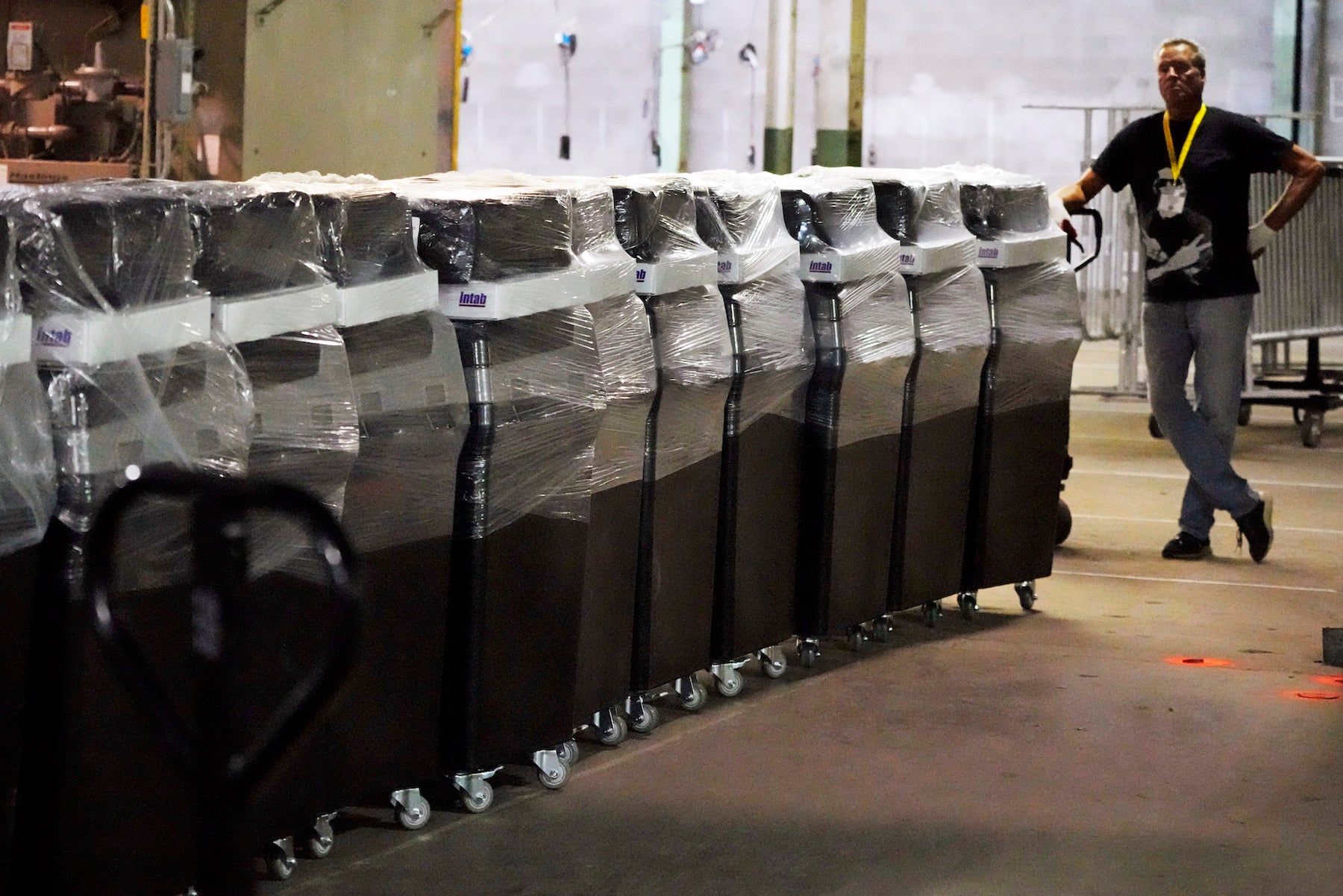
Elections officials across Pennsylvania have begun assessing their voting machines using a procedure known as logic and accuracy testing, which helps confirm their equipment is working properly ahead of Election Day.
All election equipment used by Pennsylvania counties — ranging from ballot-marking devices used for some in-person voting to machines that tabulate mail and absentee ballots — is put through this pre-election stress test.
Counties in the commonwealth are required by law to conduct logic and accuracy testing before any election, according to the Pennsylvania Department of State. All states do similar testing.
“Really, we are testing the voting system end to end,” said Forrest Lehman, director of elections and registration in Lycoming County. “It’s almost like we’re running a small-scale election.”
___
How it works
During logic and accuracy testing, election officials create sample ballots with various configurations of layouts and votes, which is known as a “test deck.”
The test deck includes ballots that are designed to trigger warnings or fail, such as ballots with no votes at all or too many votes in a contest. The test deck is run through the machines to ensure they are counting votes accurately and flagging errors.
This process helps officials confirm not only that the machines are working properly but that ballots are laid out properly and don’t have any proofing errors, such as missing candidates.
“Logic and accuracy testing, combined with post-election audits of the voted ballots, consistently provide evidence that voting machines are doing what they’re supposed to do,” said Mark Lindeman, director of policy and strategy at Verified Voting, a group that tracks voting technology in the U.S. “The systems and processes are good, and they’re getting better.”

Post a Comment